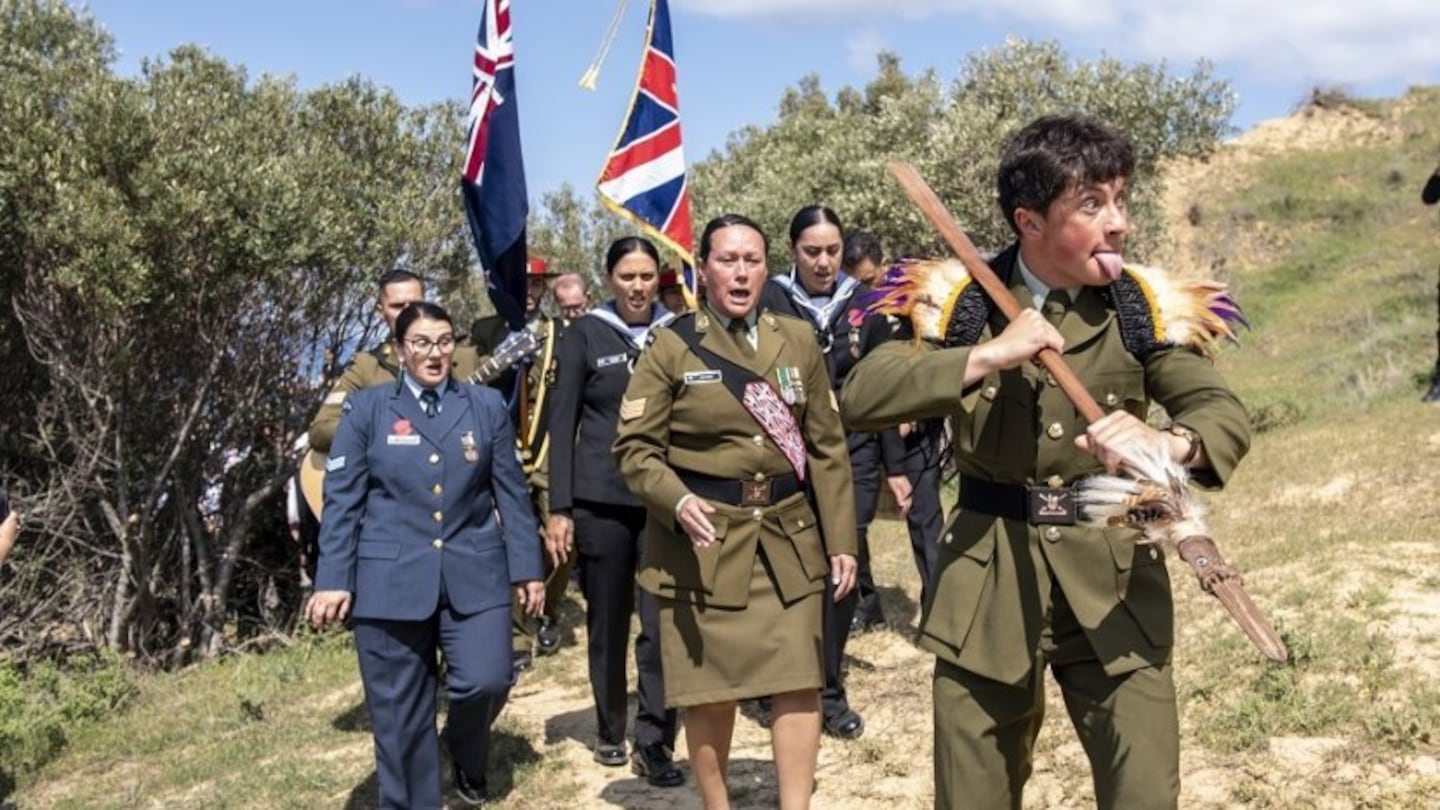Emotions ran high during a solemn rededication and remembrance ceremony held on the Gallipoli Peninsula at the place where New Zealand Maori Contingent made its camp before the bloody assault on the heights of Chunuk Bair during World War I, an iconic but costly and ultimately unsuccessful attack.
More than 100 people gathered yesterday [Sunday, April 23] at the site where the 477-strong Māori Contingent of the New Zealand Expeditionary Force arrived at Gallipoli, Türkiye, in July 1915.
Defence Minister Andrew Little joined official representatives from New Zealand, Türkiye and Australia, as well as the New Zealand Defence Force (NZDF) Gallipoli contingent, descendants of 28 (Maori Battalion) and other representatives at the historic site.
Last year during the Anzac Day commemorations, Veterans Minister Meka Whaitiri asked Gallipoli Historic Parks Directorate president Ismail Kaşdemir whether it would be possible to mark the site officially.
Since then, the NZ Defence Force and other agencies have worked closely with Turkish authorities to create an information sign and improve access to the site, which is 300 metres off the main road.
The contingent was based below No 1 Outpost, which was at that time occupied by the 10 Australian Light Horse. The contingent’s campsite became known as the “New Zealand Māori Pah” (a fortified village).
The entrance to the trench connecting the pah with the Big Sap trench was marked by traditional figures carved on its wall. There are famous photos of these carvings but they were likely destroyed by earthworks post-World War I.
'Great historical significance to Māori'
This location was chosen because it gave some protection from the shells and bullets which rained down from the heights. Yet even as they dug in on that first day, the contingent began to suffer the daily casualties from snipers and shrapnel that were part of the life at Gallipoli.
During the service, a replica King’s Colour of the Pioneer (Maori) Battalion was paraded and the Chief of Defence Force, Air Marshal Kevin Short, addressed those who had gathered for the emotional service.
“This place has great historical significance for Māori, and to everyone from every country with connections to this place,” he said.
“We are grateful to the Gallipoli Historic Parks Directorate for making the installation of the information sign that marks the site possible.”
The hymn Au e Ihu was sung during the ceremony, as it was in the same area on the evening of August 6, 1915, shortly before the soldiers went into action as they gathered for karakia (prayers), himene (hymns) and to farewell each other.
Soldiers from the time during the harrowing offensive recalled: “… they moved off, the platoons all cheered each other, crying ‘Ka mate, ka mate, ka ora’ … We all felt and thought of our great-grandfathers’ times when they prepared to go into battle’. The chaplain’s last words to the men were: Kia māia! Kia toa! [Be brave! Be bold!]”.
Following the service on Sunday, a stirring haka was performed by the NZDF Māori Cultural Element, which echoed through the natural amphitheatre, mirroring scenes from 108 years earlier.
The NZDF contingent is in Türkiye to support Anzac Day commemorations at the Anzac commemorative site and New Zealand memorial service at Chunuk Bair.




